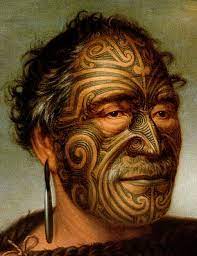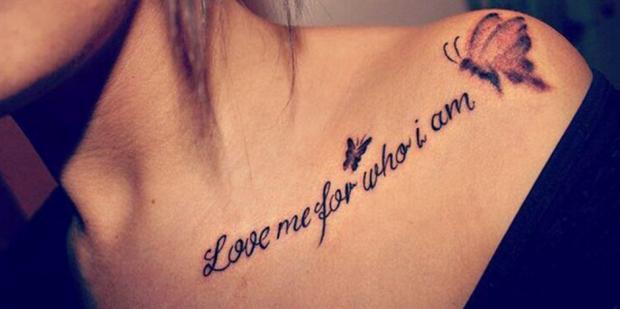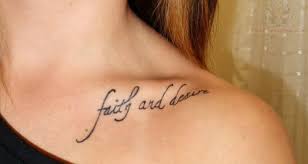
Origins
Before European colonialism arrived, Maori tattooing was reserved for individuals of high status. Considered a sacred ritual, the tattoo craftsmen known as tohunga ta moko were highly esteemed and revered. Tattoos were not just a symbol of rank but were used to communicate information such as accomplishments, status, position, or ancestry. Maori tattooing didn’t involve needles; instead, they used broad-toothed combs called uhi made of shark teeth or albatross bones to strike the skin with a mallet after dipping them in dark pigment. Facial Moko, the traditional face tattoo, was both physically painful and symbolized the transition into adulthood. Strict rules had to be followed, including abstaining from sexual intimacy and eating only boiled marrow or soup for several days before getting your face tattooed. Food would be administered through a wooden funnel to avoid contamination.
Techniques
Before Europeans arrived, skilled tattoo artisans called tohunga ta moko performed intricate ta moko designs by incising them permanently into the skin. These artisans were highly respected and considered masters of tattooing. Ta moko Tattoos were marks of high social status, and only those of high rank could afford to tattoo their faces. The process involved deep cuts and considerable pain, with tohungas reciting karakia (chants) to provide comfort during the procedure. The tattoo chisels used were made of albatross bones, shark teeth, or sharp stones, making them practical tools. Men typically had tattooed designs on their faces, neck, and arms, while women adorned chin and lip designs symbolizing nobility and warrior virility. Ta moko has become a meaningful expression of Maori culture and identity, representing spirituality and health.
Designs
Maori Tattoos representing the culture can be a stylish way to demonstrate commitment. These Tattoos look elegant on the upper body, including the shoulders and biceps. Both men and women can look gorgeous with these tattoos, considering their association with Maori society’s rich heritage. Tattoos were not just decorative or for body modification but served as a language, marking identity, power, and courage. They represented social status, rank, geographical origin, family lineage, and honor. Maori tattoo designs often feature patterns symbolizing warriors, strength, and cultural elements such as the spiral (koru) and a fish hook (hei matau). Other methods may include Makati, inspired by dog skin cloaks or whale teeth (aka).
Meanings
Maori Tattoos were significant for Polynesians, signifying ancestry, social rank, and history. They represented courage and power and sometimes became family heirlooms passed down through generations. One such symbol is the Manaia, an ancient mythical creature with a bird’s head and human body parts symbolizing spiritual protection and strength, guarding the earth, sky, and sea. Koru patterns symbolize life’s journey and aspirations for the future, while other designs like chihuahua (resembling a jack mackerel tail) symbolize prosperity and abundance. Another commonly used design is the spiral pattern called “piko,” representing growth and associated with Maui’s story of extending days and bringing fire to humanity during creation.

